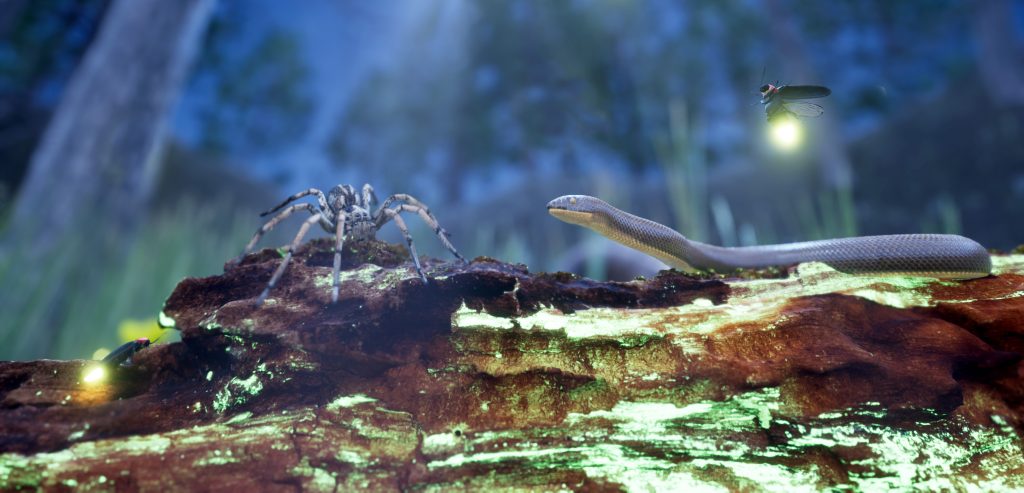Forest at Night
As the sun sets and darkness envelops the High Desert, a world comes to life. The High Desert Museum’s latest interactive experience, Forest at Night, showcases the captivating realm of nocturnal species and the critical importance of preserving darkness for their survival.
Located within the Changing Forest pavilion, Forest at Night invites visitors to embark on a whimsical journey into the nighttime habitat of various creatures. Developed by Museum curators and staff, this immersive experience aims to deepen visitors’ understanding and appreciation for the diverse array of animals that thrive under the cover of night.
At the heart of Forest at Night lies an enchanting, simulated forest illuminated by the soft glow of stars and moonlight. Visitors will encounter animated representations of the High Desert’s nocturnal inhabitants, including the white-lined sphinx, great-horned owl, striped skunk, night hawk, cricket and long-tailed weasel—each brought to life with vivid detail.
At the room’s center, a large touchscreen interface allows guests to explore the darkened, animated landscape and learn about the unique adaptations of each species projected before them. Visitors will discover how animals with reflective eyes, such as mule deer, wolf spiders, cougars and even an invasive species, the American bullfrog, utilize moonlight to navigate and hunt, akin to real-life scientists studying wildlife in their natural environment.
“Through interactive elements and engaging displays, we aim to foster a deeper connection between visitors and the nocturnal world,” explains Museum Executive Director Dana Whitelaw, Ph.D. “By understanding the challenges faced by these species, we can work together to ensure their continued existence in the High Desert.”

In addition to showcasing the wonders of the night, this experience also delves into the pressing issue of light pollution. Upon entering Forest at Night, visitors may gaze up at twinkling stars and learn about the constellations that guide migrating birds on their journeys across the High Desert. In turn, visitors will also learn that as urbanization encroaches upon natural habitats, artificial light disrupts the delicate balance of ecosystems, posing a threat to nocturnal species.
“In a region where darkness is as vital as food and shelter for select species, the Museum hopes to inspire a newfound appreciation for the importance of preserving darkness,” says Whitelaw. “To address the concern of light pollution, Forest at Night offers practical tips for reducing light pollution, both at home and in the community. Visitors will learn simple steps they can take, such as using motion sensors, installing shielded light fixtures, and opting for warm-colored bulbs, to minimize their impact on the night sky.”
Forest at Night promises to be a captivating and enlightening experience for Museum visitors of all ages, offering a glimpse into the enchanting world of nocturnal creatures and the importance of safeguarding their habitat.
Special thanks to


